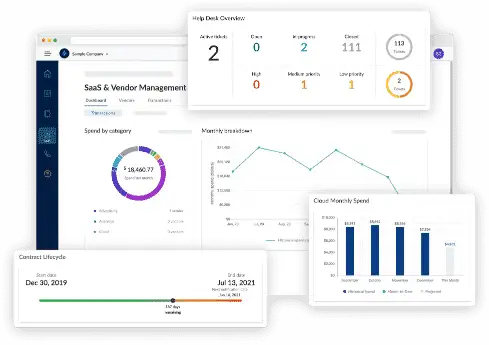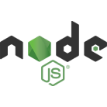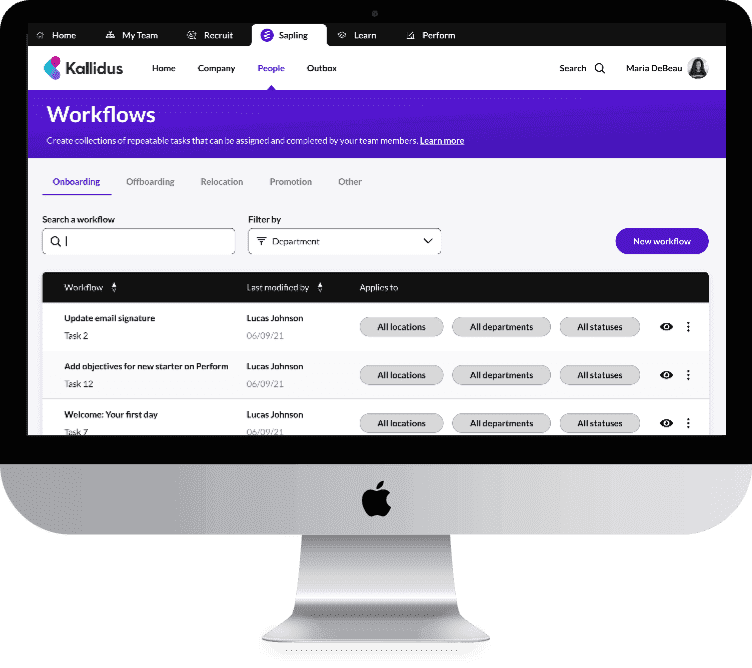According to Coinlaw, the global blockchain market is projected to reach $39.7 billion. Blockchain technology is really popular in the business world these days. Due to its decentralized nature, it has brought a lot of positives for companies. From enhancing supply chain transparency to transforming financial transactions, blockchain is a transformative technology that can help in changing ownership across multiple industries. Still, a lot of individuals think that the term blockchain is strange.
This blog seeks to elucidate blockchain technology by outlining its definition, operation, and significance.
What is Blockchain?
A peer-to-peer computer network called blockchain keeps track of and preserves transaction data. Traditional databases were centralized and maintained by a single entity, such a bank or government agency. On the other hand, blockchain keeps data on a decentralized worldwide computer network called “nodes.” But with blockchain, the data is on a decentralized global network of computers, or “nodes.”
These nodes are in charge of verifying new transactions and maintaining the integrity of the network. Moreover, each node has a copy of the whole blockchain, thus, allowing for greater transparency.
Every transaction on a blockchain is documented as a block and appended to the series of earlier transactions. All network users may see the resulting chain of blocks, which makes the network transparent, safe, and unchangeable once verified.
Blockchain is developed using languages like C++, JavaScript, Python, and there are some new languages like Solidity, Simplicity, and CX.
Components of Blockchain
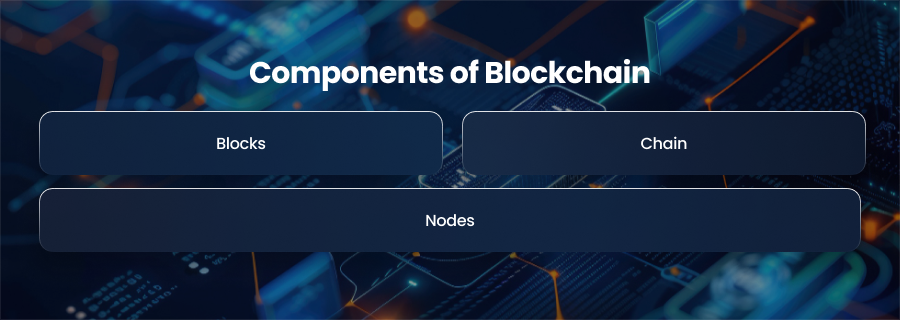
Blocks
Transaction information such as the sender, recipient, date, and amount are stored in these data components. Each block has a cryptographic hash that serves as its distinct identification in addition to a reference to the block before it.
Chain
An unchangeable record of every transaction is created by firmly adhering each new block to the one that came before it. The blocks are connected in a chronological chain.
Nodes
The network’s autonomous computers authenticate transactions and ensure the blockchain’s integrity. Moreover, any changes are replicated across the network.
Features of Blockchain Technology
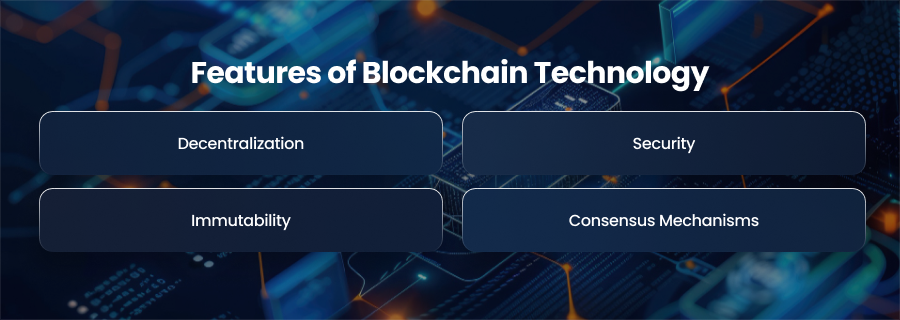
Decentralization
Because of its decentralized nature, data cannot be centralized. This implies that no single user has power over the whole network. Instead, each participant shares responsibility for verifying and recording transactions ensuring transparency.
Security
Blockchain protects customer and transaction data thoroughly by using cutting edge encryptions. This guarantees that this data cannot be accessed by anybody outside the blockchain.
Immutability
Immitability is another great feature of blockchain technology. This feature doesn’t allow any information to be deleted once it’s stored. This feature is especially crucial in industries that need precision and confidence.
Consensus Mechanisms
Blockchain networks employ consensus algorithms to verify and authorize new transactions. Without the assistance of a reliable third party, these procedures guarantee that all network members come to a consensus.
How Does Blockchain Work?

Transaction Initiation
A transaction is started by a user and may entail altering data on the blockchain or transferring bitcoin. The sender, destination, and quantity of data or cryptocurrency being transferred are among the relevant details included in the transaction.
Transaction Validation
The transaction is broadcast to the network of nodes as soon as it is started. These nodes verify the legitimacy of the transaction. The consensus process ensures that the transaction is legitimate and that it follows the blockchain’s standards.
Block Creation
The transaction is combined with other transactions to create a new block when it has been verified. A cryptographic hash, a reference to the block before it, and a record of the transactions are all included in every block.
Block Linking
The current block is linked to the preceding block in the chain using its hash. As a consequence, a chronological chain of blocks is established, with each one securely attached to the one before it.
Distributed Update
Another feature of blockchain is distributed updates. Whenever a block is added it is then sent to all the nodes. This maintains system synchronization.
Types of Blockchain

Public Blockchain
Public blockchains function in a totally decentralized fashion and are accessible to everybody. Anyone may access the transaction history, validate transactions, and join the network.
Private Blockchain
Private blockchains are more restricted. Only approved participants are allowed access, often inside a single company or a group of reliable organizations. Enterprise applications, where data management and privacy are crucial, frequently employ this kind of blockchain.
Consortium Blockchain
Numerous organizations, as opposed to just one, oversee a consortium blockchain. This kind of blockchain enables more scalability and a more collaborative approach than a private blockchain.
Hybrid Blockchain
Hybrid blockchains combine openness and privacy by making certain data public while keeping others private.
What Are The Benefits of Blockchain?
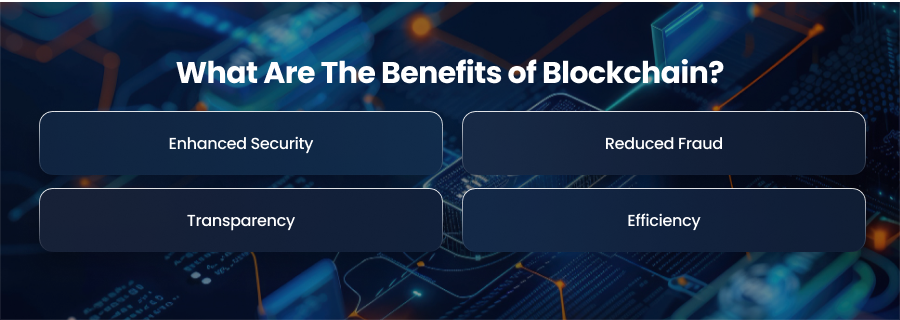
Enhanced Security
Blockchain protects data using cutting-edge encryption techniques that make it very impossible to change or modify.
Reduced Fraud
The immutability of blockchain lowers fraud and mistakes in data administration, especially in banking and supply chain management.
Transparency
Since everyone in the network has access to the same data, blockchain’s openness boosts confidence.
Efficiency
Blockchain’s ability to automate processes and remove middlemen might simplify transactions and save expenses.
What Are The Challenges of Blockchain?
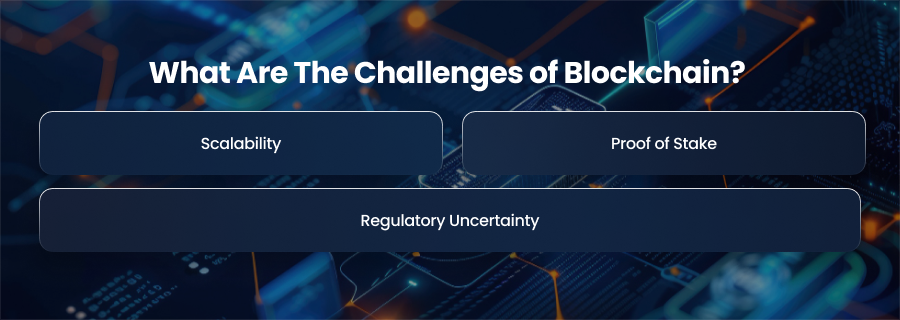
Scalability
Blockchain networks may become slower and more expensive to run as they grow. Multiple transactions at once are difficult for public blockchains like Ethereum and Bitcoin to manage.
Proof of Stake
Proof of Work is vital in many blockchain networks, including Bitcoin, since it requires significant processing power and energy. One of the most recent consensus techniques, Proof of Stake, aims to address this issue.
Regulatory Uncertainty
Because blockchain technology is still in its early stages, many nations have failed to implement clear regulations controlling its use, notably in terms of cryptocurrency and data protection.
Final Words
Blockchain provides a safe, transparent, and decentralized method of managing data that might have a big influence on many different business models. Despite its ongoing growth, its potential to upend the financial and medical sectors is clear. By comprehending the fundamentals of blockchain, people and companies may be able to take advantage of it for supply chain optimization, data security, or cryptocurrency adoption.






